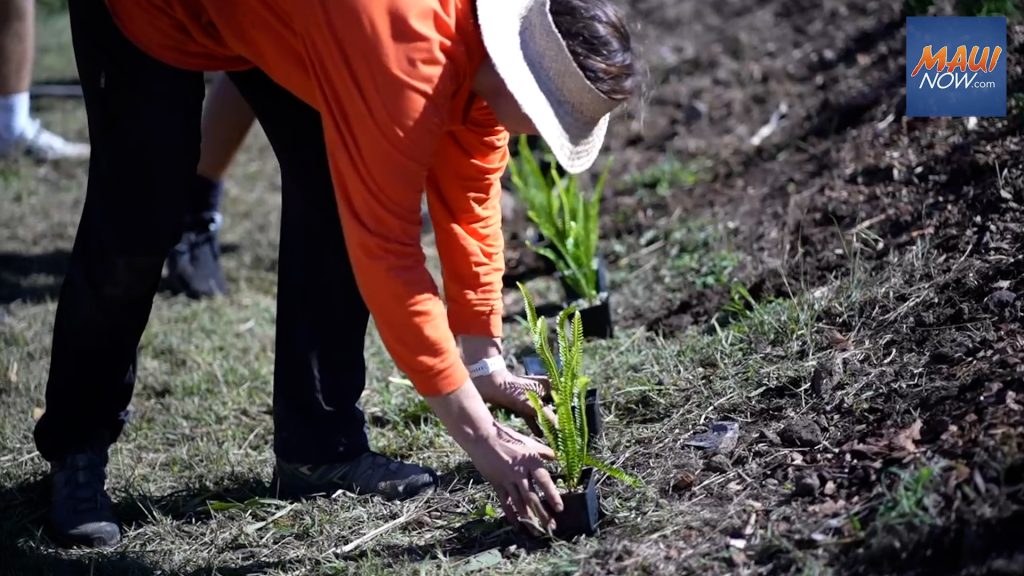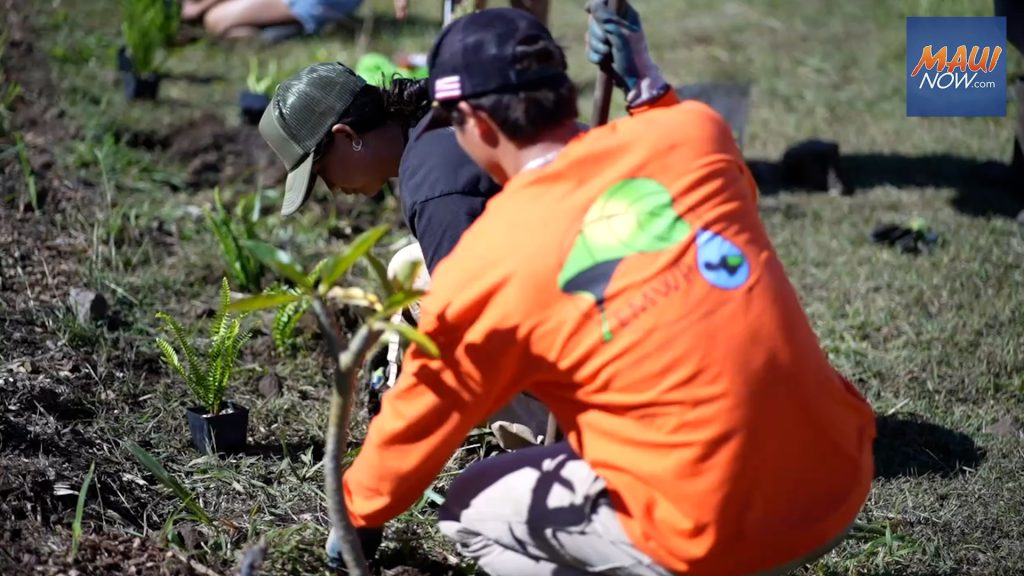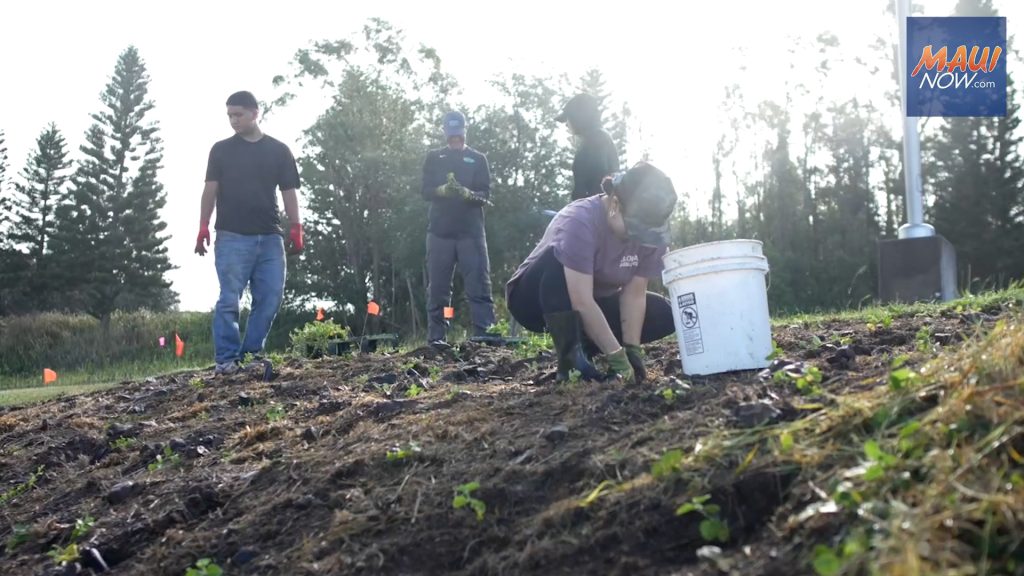Maui youth join UH partnership’s conservation, fire mitigation efforts
Dozens of students at King Kekaulike High School on Maui planted hundreds of native shrubs, grasses and ferns in November. It is part of a massive restoration effort by the University of Hawaiʻi’s East Maui Watershed Partnership—between federal, state and private landowners—to preserve the native forest.
The students planted ʻūlei, pili grass, ʻilima, pāʻūohiʻiaka and kupukupu fern.
“I feel like just by what we’re doing, like small stuff like this planting and getting involved with the ʻāina is a huge step in bettering our future,” said Kekaulike student Bella Kuailani.
Another student, Keoliakaiponohea Kekauoha-Schultz, added, “Not only is this work important culturally, but it’s also important for the ʻāina and the soil.”
Educational efforts like these are part of East Maui Watershed Partnership’s (EMWP) multi-pronged strategy to implement land restoration and improved management practices on 23,000 acres within the 100,000-acre East Maui Watershed. The area is home to the largest intact native forests on Maui and also habitat for a globally significant concentration of endangered birds and endemic plant and invertebrate species, as well as the source of water that sustains upcountry households and much of Maui’s agricultural production.
Funds from the Bezos Maui Fund enabled the Kekaulike planting project, and will support future school plantings and an expansion of on-the-ground resource management actions in remote watershed areas over five years.
“We’re really hoping that the students will learn about the importance of native plants and how those native plants support our native animals, whether it be birds or insects, and how that ecosystem works as a whole, and that together creates a healthy watershed because we all need water right from here into the future,” said Allison Borell, EMWP community outreach and education liaison.
EMWP also works to reduce the threat of wildfire by eliminating potential fuel sources such as invasive plants and encouraging the planting and protection of native species.
“Reduction of fuel loads in large stands of fire adapted invasive pine trees is one of the most powerful things we can do to reduce the threat of wildfire in these natural areas,” said Dan Eisenberg, EMWP program manager.
The EMWP operates as a project of the UH Mānoa Pacific Cooperative Studies Unit and is supported by state and federal funds, grants, and donations from public and private institutions.
“As stewards of this land, it is our responsibility to ensure the health of our native ecosystems for future generations. By working together with our communities, especially our youth, we can make a lasting impact on the conservation of these vital resources,” said Shaya Honarvar, Pacific Cooperative Studies Unit director
EMWP was the first watershed partnership formed in Hawaiʻi in 1991, and has served as a model for similar partnerships across the state, many of which are also projects led by UH Mānoa’s Pacific Cooperative Studies Unit.
Borell said, “I want to relay to everybody that we need to protect these special places because once they’re gone, they’re gone forever and we don’t get them back.”



















